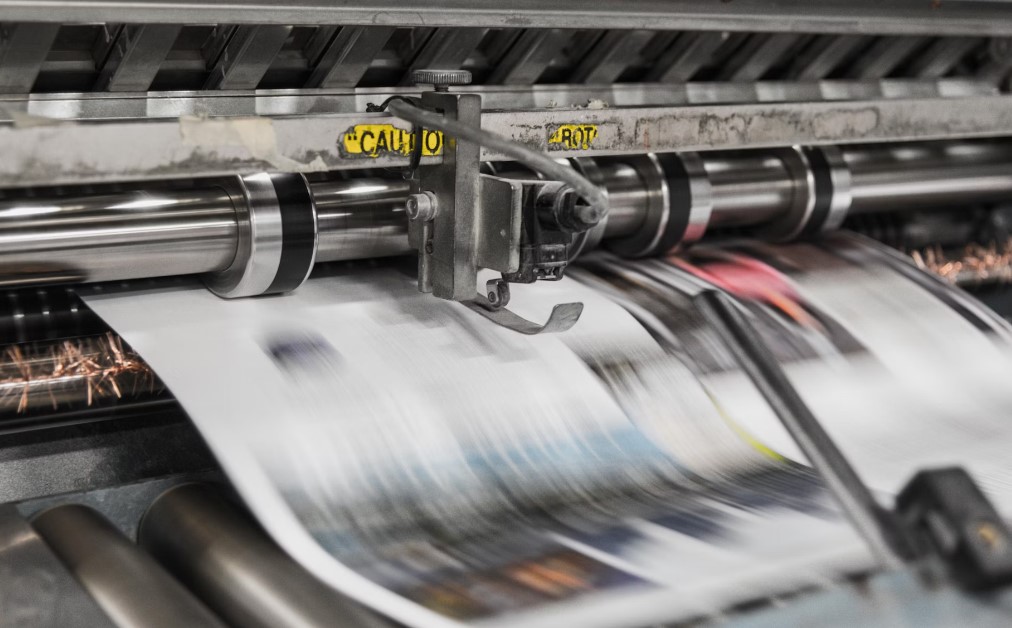Navigating a variety of techniques, materials, and potential problems may be necessary to perfect a craft. To achieve perfect print quality, one may need to be knowledgeable, precise, and detail-oriented while selecting a printing service provider and troubleshooting typical issues. So, this blog will provide a comprehensive guide to professional printing services:
- Understanding Professional Printing
- Types of Professional Printing Services
- Professional Printing vs. DIY Options
- Choosing the Right Printing Service Provider
- Researching Potential Printing Companies
- Preparing Your Files for Printing
- Understanding Printing Materials
- Design Tips for Print Projects
- Printing Techniques and Special Finishes
- When to Use Special Finishes
- Managing the Printing Process
- Troubleshooting Common Printing Issues
- Master the Art of Printing with a Professional Printing Service
Understanding Professional Printing
To create printed items of the highest quality, professional printing may refer to a variety of services provided by specialized printing businesses. Professional printing, as opposed to do-it-yourself (DIY) solutions, can make use of advanced technology, knowledge, and materials to guarantee excellent outcomes.
Types of Professional Printing Services
Printing services may offer a wide range of options designed to satisfy different needs. Here are the types of professional printing services:
1. Offset Printing
Offset printing may be perfect for printing in big quantities because it uses plates to transfer ink onto paper, giving accurate and reliable results.
2. Digital Printing
Digital printing can reduce the need for plates by directly transferring digital information onto paper, making it ideal for short print runs and quick production times.
3. Large Format Printing
Large format printing uses specialist printers that can handle big materials to print large-scale designs like:
- Banners
- Posters
- Signage
Professional Printing vs. DIY Options
Many benefits come with professional printing, such as:
- Better print quality
- Availability of a large selection of materials and finishes
- Uniformity throughout print runs
- Knowledgeable assistance at every step of the way
Even if DIY printing may appear more affordable at first, professional printing can often end up being more effective and economical over time.
Choosing the Right Printing Service Provider
It is essential to take into account several criteria when choosing a printing service provider to make sure your expectations are fulfilled accurately and professionally. Here are some tips for picking the best supplier of printing services:
1. Quality of Printing
Choose a printing service supplier who has a track record of meeting the demands for clear, colorful prints.
2. Turnaround Time
Assess the supplier’s capacity to fulfill your deadlines without sacrificing quality.
3. Pricing and Affordability
Evaluate prices from various companies to find a balance between budget and quality.
4. Customer Service and Support
Pick a printing service provider that has a reputation for quick, dependable assistance and communication.
Researching Potential Printing Companies
You may spend some time investigating and comparing printing companies according to criteria including:
- Capabilities
- Expertise
- Reputation
- Client testimonials
To evaluate quality directly, you may want to ask to see samples of their work.
Preparing Your Files for Printing
A vital first step in ensuring the accuracy and quality of your printed documents is preparing your files for printing, which may involve taking the following factors into account:
File Formats Accepted by Printing Services
Make sure your files are compatible with the recommended file formats (usually PDF, EPS, or AI) of the printing service provider.
Image Resolution and Quality
You may keep your photos at 300 DPI or higher to guarantee crisp, detailed prints free of pixelation or blur.
Color Modes and Profiles
You may study the difference between CMYK and RGB color modes to make sure your files are prepared properly for printing. To maintain color accuracy, you may include color profiles as well.
Bleed and Margins
To avoid cropping and guarantee a polished appearance, you can incorporate bleed and margin allowances into your design. Generally, 0.125 inches of bleed is advised.
Understanding Printing Materials
Achieving the ideal look and feel for your printed projects may require an understanding of printing materials, which includes things like the following:
Different Types of Paper and Finishes
Explore different paper choices, such as:
- Satin
- Glossy
- matte textures
Each type of paper has special physical and visual characteristics. To meet the requirements of your project, you may consider aspects like:
- Durability
- Thickness
- Texture
Specialty Printing Materials
To improve aesthetic appeal and communicate sustainability principles, consider using unique materials for specific projects, such as:
- Textured paper
- Metallic substrates
- Recycled paper
Sustainability Considerations
You can choose environmentally friendly printing supplies and methods to reduce your influence on the environment and support sustainable development objectives. You may seek certifications to make sure that production and sourcing practices are ethical.
Design Tips for Print Projects
To guarantee clear information and a striking visual impact in your printed documents, effective print design may demand careful consideration. The following are some suggestions to get you started:
1. Importance of Effective Design for Print
To effectively and captivatingly communicate your idea, print design may demand careful consideration of:
- Layout
- Typography
- Color
- Imagery
2. Key Design Principles to Consider
To produce print products that are visually appealing and compelling, you may prioritize:
- Readability
- Hierarchy
- Balance
- Consistency
3. Using Professional Design Software
Use industry-standard design programs to quickly and accurately produce print-ready files.
Printing Techniques and Special Finishes
The visual appeal and tangible feel of printed materials can be creatively enhanced through printing techniques and specific finishes, taking them from ordinary to outstanding. These are some methods:
1. Embossing
Use raised patterns and textures to give your design a more elegant, tactile finish.
2. Foil Stamping
To add a sense of sophistication and elegance to your prints, you can add shine and metallic embellishments.
3. Spot UV Coating
Use glossy highlights to draw attention to particular areas of your design and create more contrast and visual interest.
When to Use Special Finishes
In cases when attention to detail and visual impact are crucial, special finishes can work especially well for:
- High-end branding materials
- Invitations
- Packaging
- Promotional products
Cost Considerations
Although unique finishes can improve the appearance and feel of your prints, they can often raise production costs and lead times. Whether or not to use special finishes would depend on your project’s needs and budget.
Managing the Printing Process
Keeping an eye on every aspect of production may be needed to manage the printing process and guarantee that the final product satisfies project specifications and quality standards. Here are some processes to look into:
1. Communicating with the Printing Service Provider
It is important to keep lines of communication open and clear with your printing service provider to express your expectations, offer suggestions, and quickly resolve any issues.
2. Proofing and Reviewing Print Proofs
Before finalizing the final print run, you may thoroughly check print proofs for accuracy in color, layout, and text. To ensure perfection, ask for modifications as needed.
3. Approving the Final Print Run
Give your final permission for the print run if you are satisfied with the print proofs, making sure that all requirements are satisfied before production starts.
Troubleshooting Common Printing Issues
To achieve the best print quality and guarantee the success of your projects, you may need to know how to troubleshoot these problems successfully. Here are a few troubleshooting methods:
1. Print Quality Problems and Solutions
Poor resolution, uneven color, and blurriness may be some common problems with print quality. Try lowering the image resolution, changing the color settings, or using better printing materials to solve the issue.
2. Issues with Color Accuracy
Before completing the print run, you can make sure color representation is accurate by utilizing color profiles, calibrating your monitor, and requesting printed proofs.
3. Dealing with Printing Errors
If there are any printing mistakes, you may get in touch with your printing service provider right away so they can resolve the problem and offer a refund or reprint.
Master the Art of Printing with a Professional Printing Service
From choosing the best materials to efficiently running the production line, every little thing counts toward producing flawless print quality.
By understanding the types of professional printing services, choosing the right printing service provider, understanding printing materials, knowing printing techniques and special finishes, managing the printing process, and troubleshooting, you may be able to skillfully and confidently master the art of printing with a professional printing service.



